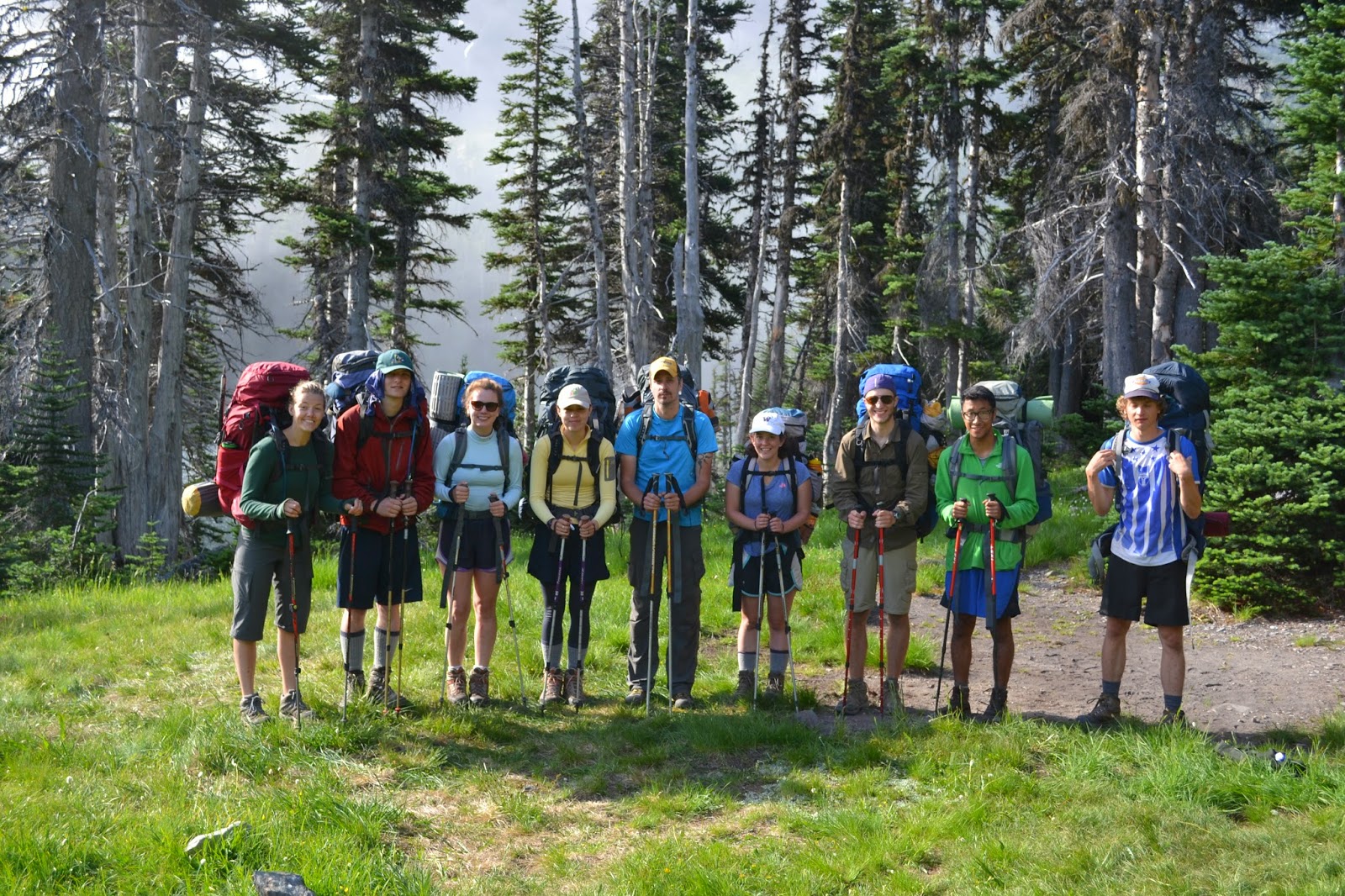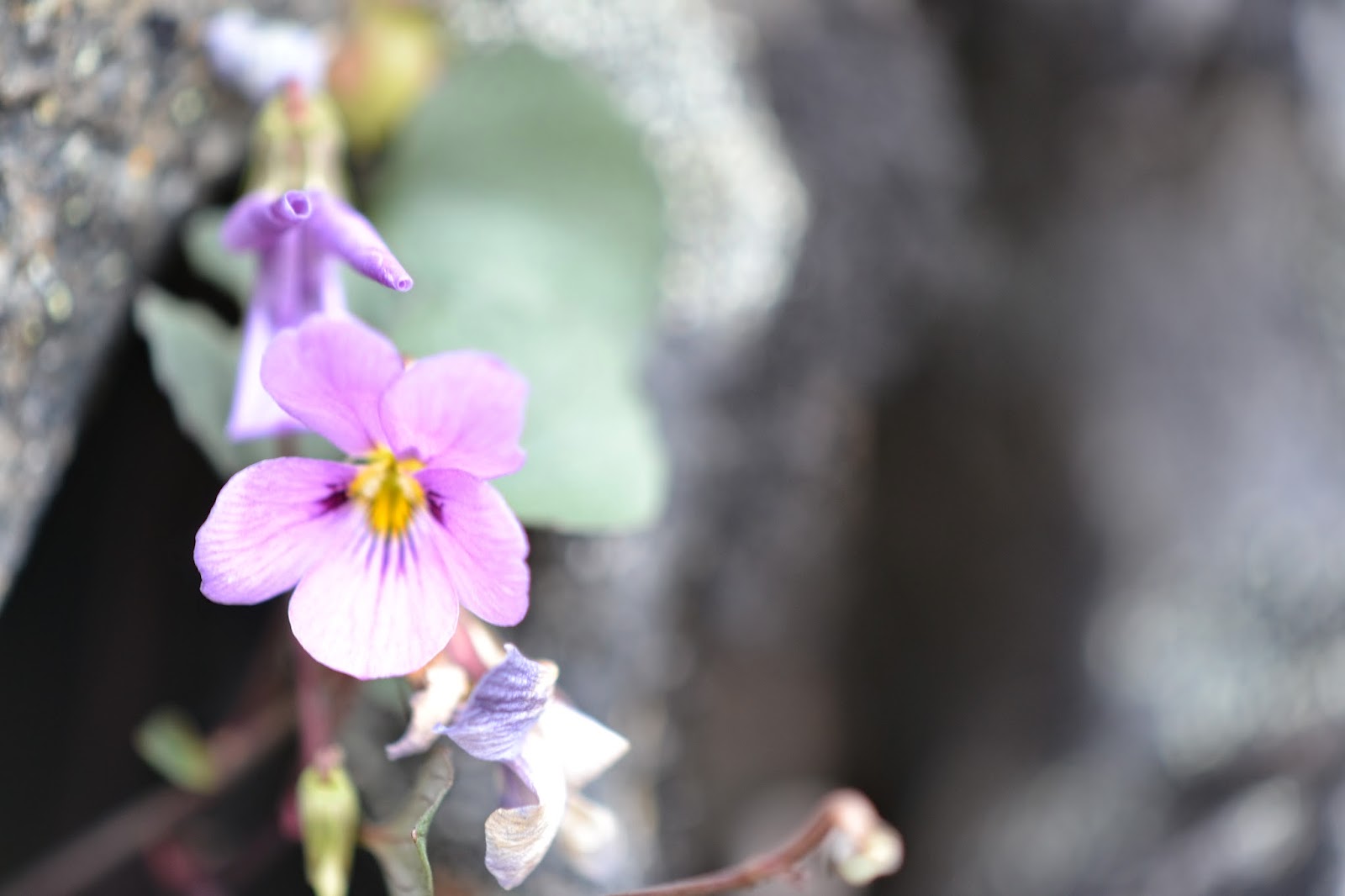Day 9
From the Perspective of Anthony Dang
I woke up to an unmistakable aroma, a crackling sound that was almost like music to my ears, I sensed it from a distance in my tent, it was bacon. Tim was cooking bacon for breakfast that Carter and him retrieved from an in town pit stop when they moved the vans to Obstruction Point the day before. We each had two and a half strips and we even dipped our Wasa bread, which I’ve developed a love-hate relationship with, in the fat for breakfast. It wasn’t much, but it reminded us of what many were missing from the city, home cooked meals that weren’t purely carbs.
Most of us were more than ready to leave the Olympic
National Park and return to civilization after an exhausting 8 days, but that
excitement was met with a mixture of bittersweet feelings as well. Returning
back home meant seeing friends, family, and the familiar. However, it was at
the expense of waking up to a group of adventurers who had created a bond that could
never be replicated, and leaving the wilderness that we learned so much about
and created a relationship with. For the final time of this trip, we repeated
the morning routine I had grown entirely fond of; rolling up our sleeping pads,
cooking breakfast together, purifying water, breaking down our campsites, and
most importantly leaving no trace of our presence. After a 6:30 am wake up time,
we were rearing to leave Moose Lake.
Saying
goodbye to Moose Lake, Photo credit: Tim Billo
Hiking
to Obstruction Point, Photo credit: Tim Billo
Yoko lead the trek towards our vans at a quick pace
as we were all restless to get home. At the top of the ridge, Tim took us
on a detour to search for endemic flowers that were becoming extremely rare due
to the mountain goats that had been introduced to the park. We hiked across the
"Spine of Death", the last of our tricky terrain for the trip, to find Piper’s
Bellflower and Flett’s Violet. At first we were all very reluctant about this
longer than expected detour, but after considering the fact that we may be some
of the last people to ever get to see and photograph these flowers before they
vanish from this earth in 20 years or sooner, reminded us how privileged we
were and to cherish our final educational moments in the park.
Flett’s Violet (bottom) and Piper’s Bellflower
(above), Photo credit: Tim Billo
We
returned on trail to our vans without breaking so we could make a speedy return
home. Our final lesson from Tim was on the ridge going home that mimicked the
environment of the arctic tundra [and harbored some arctic plants that remain isolated here following the last ice age] . Here
we saw circles of raised rock known as patterned ground that is caused by
freeze-thaw cycles. It wasn’t the best time of season to see how it affects the
vegetation growth, but it was still somewhat noticeable.
Tim explaining the patterned ground around him, Photo
credit: Jake Schiffler
.JPG) |
| Patterned ground (rock polygons) on the broad ridge near Obstruction Point, with the Needles range in the background. |
.JPG) |
| Scrambling back from our trek to find Flett's violet. The flower grows in the craggiest of cracks on this ridge. |
We made the final push in our journey to exit the Olympic National Park. We were able to see Obstruction Point in the distance which reinvigorated our sore legs. At last we reached the parking lot which is when the process of readjusting to life back home and our old responsibilities began. Just seeing our cars felt foreign. We put on our clean change of clothes we had stowed in the vans and took our final group picture. The 9 day backpacking trip had a reached an end.
Obstruction Point. Left to right; Merrick, Tess,
Carter, Miranda, Serena, Yoko, Matthew, Jake, and our beloved professor in our
arms, Tim Billo
We drove out of the park moving at a slow speed of
10 mph, which compared to our hiking pace, felt like traveling at light speed.
Backpacking has taught me a great lesson in patience, which Tim brought to
light the night before in our discussion. It takes patience to get from point A
to B when backpacking. When off trail patience is even more crucial, you need
to be thoughtful about your route and each step you take. Most importantly, moving
through life at a slower patient pace allows one to drink in your
surroundings more deeply. A patient pace creates opportunities to learn from
not only people passing by you, but also your surroundings. Being in a speeding
car brought to my attention how little we value patience in our society. There
was no time to learn about the ecosystem surrounding us in a speeding van.
After returning our bear canisters to the visitor’s center
we stopped at a pizza joint with raging appetites for food from civilization.
Despite being with our professor, several of us had ordered a beer (not
including Professor Tim or our fearless TA Carter), one of the most talked
about things we missed during the trip. It was one of the most satisfying beers
of my life. Jake and I also unashamedly devoured an 18 inch pizza. Continuing
our journey home we waited in line at the Kingston ferry terminal where some of
us indulged in ice cream and crepes from local food stops. On the ferry we
discussed who would blog each day and generated ideas for what our essays might
be about.
The ferry docked and here we were again, finally back home.
The day we returned back was after a sunny week had ended, it was gray and
dreary, typical Seattle. It fit the mood for what was the bittersweet
ending of a trip that I am never going to forget.
It’s been more than a week after the trip has ended and
I have only just fully readjusted. The first night back in Seattle was tough. The city overwhelmed me and I
missed sleeping under the stars and waking up in the wilderness with strangers
who had become close friends. I found comfort in the rugged and quiet lifestyle
of living in the mountains. It was sensory over-load at first entering the city
again, but the trip helped me learn who and what were of real value at home and
that I needed to filter out frivolous stress inducing parts of life.
The amount that I learned about ecological science,
philosophy, the history of the Olympic Mountains, and my self during these 9
days was insurmountable. I feel like I gained more knowledge that will actually
stick with me in these nine days than I would've had I been sitting a lecture for a full quarter. Before the trip, I had taken classes such as limnology and mycology, and
I thought I would never apply what I had learned from them to anything meaningful. The wilderness however, provides a class room and field for
scientific application where I can continue learning about science and even myself
for the rest of my life if I wanted as the intricacies of the ecosystem are
infinite. I had always learned about why preserving the earth we live on is
important passively in class rooms, but it wasn’t until seeing the sun set on the
mountains while being surrounded by endemic flowers on Gray Wolf Pass of night 4 that
it really sunk in why conservation science is important to me.
Night 4 on top of Gray Wolf Pass, Photo
credit: Tim Billo







No comments:
Post a Comment